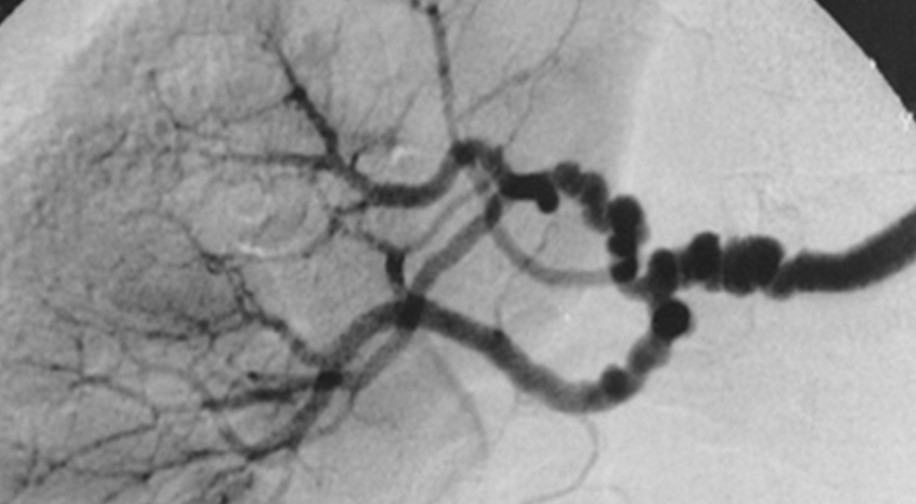Who Is Most at Risk for Fibromuscular Dysplasia
Keeping your blood vessels healthy is one of the most important steps you can take to live a long, healthy life. Along with eating a balanced diet and staying active, it's important to seek professional medical care when you notice any abnormal cardiovascular symptoms. Doing so can make treating your condition easier and more effective, including fibromuscular dysplasia. Here's what you should know about fibromuscular dysplasia before scheduling a free consultation with the trusted experts at the Vascular Institute of the Rockies.
What is Fibromuscular Dysplasia?
Fibromuscular dysplasia (FMD) is a rare disorder that causes a person's healthy, flexible blood vessels to become less strong and less flexible. Because the blood vessels become stiffer, they're also more likely to experience damage. As a result, FMD can lead to other serious health complications, including stenosis, high blood pressure, aneurysm, and, in some cases, dissection of the arteries.
What Are the Symptoms?
The symptoms of FMD depend on which arteries the disease has affected. While some individuals may not experience any symptoms at all, others may notice signs caused by restricted blood flow, such as:
FMD can also lead to serious medical conditions, including:
Although fibromuscular dysplasia can happen to anyone, there are certain risk factors that could make you more likely to develop this condition. These include:
The way that FMD is treated depends on your particular symptoms, the location of the affected artery, and any additional health conditions you may have, such as high blood pressure. In its earliest stages, it's possible for your healthcare provider to recommend monitoring the condition before undergoing treatment options. For people with FMD and high blood pressure, medications are often used. These could include angiotensin-converting enzyme (ACE) inhibitors, diuretics, aspirin, and beta blockers, among others. FMD could also require more invasive treatments, including:
If you experience one or more symptoms of FMD, don't wait to schedule an appointment with the experienced team at the Vascular Institute of the Rockies. Having your FMD diagnosed early is the best way to manage your symptoms and prevent the disease from progressing. Contac us today to schedule your free consultation.
Go Back What is Fibromuscular Dysplasia?
Fibromuscular dysplasia (FMD) is a rare disorder that causes a person's healthy, flexible blood vessels to become less strong and less flexible. Because the blood vessels become stiffer, they're also more likely to experience damage. As a result, FMD can lead to other serious health complications, including stenosis, high blood pressure, aneurysm, and, in some cases, dissection of the arteries.
What Are the Symptoms?
The symptoms of FMD depend on which arteries the disease has affected. While some individuals may not experience any symptoms at all, others may notice signs caused by restricted blood flow, such as:
- Dizziness or vertigo
- Migraines
- Bruit (an unusual swishing noise that takes place in your neck or abdomen when your healthcare provider listens to your blood flow through a stethoscope)
- High blood pressure
- Poor Kidney function
- Ringing sound in your ears
- Neck pain
FMD can also lead to serious medical conditions, including:
- A stroke
- A brain or abdominal aneurysm when the artery becomes weak and bulges
- An arterial dissection when the inside wall of the artery tears
Although fibromuscular dysplasia can happen to anyone, there are certain risk factors that could make you more likely to develop this condition. These include:
- Age: People are most likely to be diagnosed with FMD in their 50s.
- Sex: Women are more likely to experience FMD than men.
- Smoking: People who smoke cigarettes are more likely to be diagnosed with FMD. For people diagnosed with FMD, smoking can make the condition worse.
The way that FMD is treated depends on your particular symptoms, the location of the affected artery, and any additional health conditions you may have, such as high blood pressure. In its earliest stages, it's possible for your healthcare provider to recommend monitoring the condition before undergoing treatment options. For people with FMD and high blood pressure, medications are often used. These could include angiotensin-converting enzyme (ACE) inhibitors, diuretics, aspirin, and beta blockers, among others. FMD could also require more invasive treatments, including:
- Percutaneous transluminal angioplasty (PTA): This is typically done at the same time as a catheter-based angiogram in which dye is injected through a catheter into an artery. X-rays are used to show how the dye travels through your arteries, including the narrow areas. Then, a wire is inserted into the artery and a catheter with a balloon is inserted into the narrow areas. The balloon, and in rare cases a metal stent, is used to support the weakened part of the artery.
- Surgical revascularization: Surgery is a rare but possible option to treat FMD. If PTA is not an option for you and the narrowing of your arteries is severe, your healthcare provider may recommend surgery to replace the narrow part of your artery.
If you experience one or more symptoms of FMD, don't wait to schedule an appointment with the experienced team at the Vascular Institute of the Rockies. Having your FMD diagnosed early is the best way to manage your symptoms and prevent the disease from progressing. Contac us today to schedule your free consultation.
